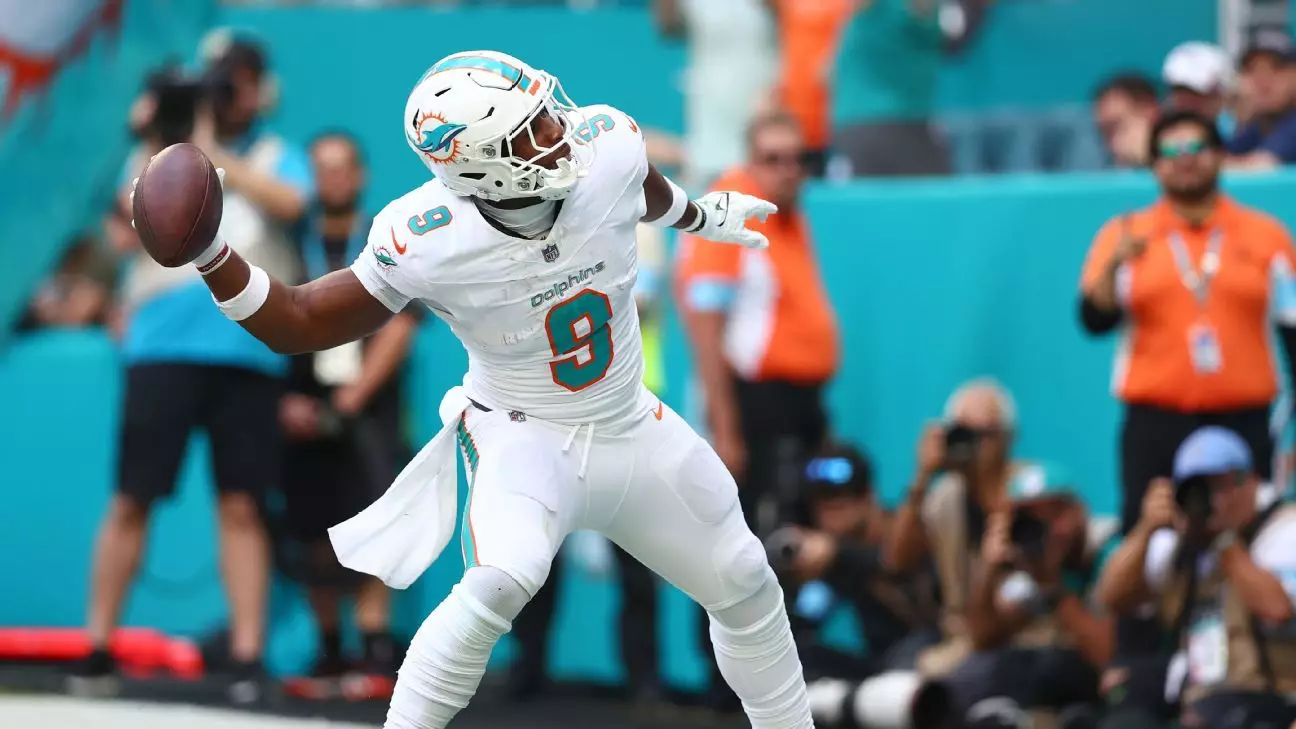The recent discussions surrounding Jonnu Smith and his precarious position with the Miami Dolphins resonate as a clear reflection of both his individual aspirations and the business-driven nature of professional football. Smith, now 29, is keen on revisiting the terms of his two-year contract, hoping to secure something more favorable than the $4.8 million set for the 2025 season. Such a quest places him at a critical crossroads in his career — one filled with the challenging interplay between loyalty to a franchise and the pursuit of financial security.
Drew Rosenhaus, Smith’s agent, paints a heartening narrative on WSVN-TV about his client’s desire to remain in Miami, emphasizing the tight end’s historical achievements with the Dolphins as a cornerstone of that narrative. Smith shattered franchise records last season, setting marks for receptions and receiving yards that redefine expectations for the tight end position within the team. Yet, despite his impressive accolades, Smith now finds himself in negotiations, which may be less about personal legacy and more about market realities within the NFL.
Contextualizing Contract Claims
The Dolphins’ management has plenty to consider in their dealings with Smith. His power on the field and connection to local identity — attending Florida International University and breaking records right where he established his career — creates a compelling case for retaining him. However, negotiations are often shrouded in uncertainty, particularly in a landscape where franchise priorities frequently shift. For the Dolphins, honoring Smith’s aspirations while maintaining their own financial strategies will require deft maneuvering.
On the flip side, Smith’s interest from teams like the Pittsburgh Steelers invites scrutiny. The Steelers showed their intent to strengthen their offensive arsenal, entering discussions that could lead to a trade. While they currently boast a promising tight end lineup, including Pat Freiermuth and promising rookies, the allure of Smith’s skill set cannot be discounted. His existing relationship with offensive coordinator Arthur Smith adds another layer to this potential union, signaling a pre-established synergy that is enticing for any team looking to bolster its performance.
The Aftermath of Team Dynamics
It’s important to recognize the underlying tension that accompanies such trade and contract negotiations. For Smith, the notion of leaving Miami stands contrary to his personal desires; he is not just securing a paycheck but also preserving a community connection. Many players hold emotional ties to their teams, and trading or transitioning from a beloved franchise often leads to discontent. Swapping teams may indeed promise a better pay scale, yet it can come at the cost of personal fulfillment.
On the Steelers’ end, the decision to pursue Smith reflects their current lack of depth in key receiving positions, particularly after the controversial trade of George Pickens to the Dallas Cowboys. The depth of their roster is definitely something to scrutinize, and moving for Smith may be interpreted as both a desperate yet strategic attempt to recover from prior losses. The irony unfolds when one realizes that the tight-end position, despite being seen as a core receiving role within the organization, is not a direct need for Pittsburgh given their existing list of performers.
Framing the Future of Players and Organizations
As Rosenhaus optimistically advocates for Smith, one cannot ignore the pragmatic undercurrents informing football operations today. Betraying one’s hometown or fan base often translates to blurred lines of trust. The value of a star player extends beyond the stats they produce; it encapsulates the relationships they build within their teams and the communities they represent. In this context, as Smith weighs his options, he embodies the delicate balance between ambition and loyalty intrinsic to American professional sports.
Ultimately, thinking beyond contracts and burnished records reveals deeper truths about identity and aspiration for athletes like Smith. Navigating these complexities highlights the realities of player welfare amidst the poker-like games of negotiations and contracts that some executives relish. The evolving dynamics in this situation could lead to a sensational story arc in which one player’s narrative reflects the broader themes of change, trust, and the essence of what it means to be both an athlete and a community figure.

